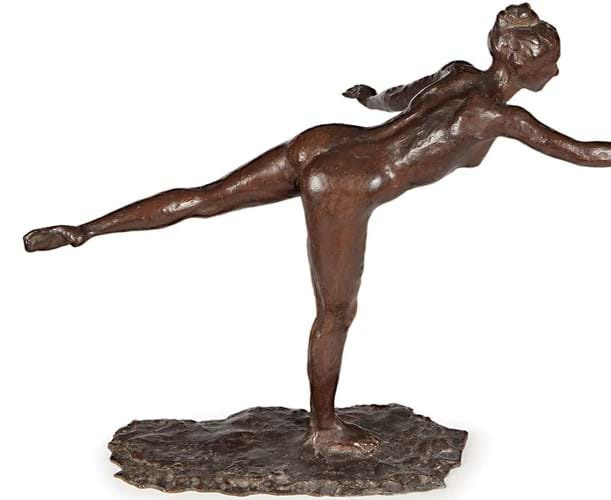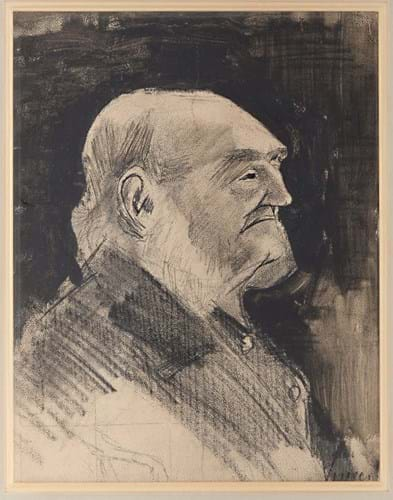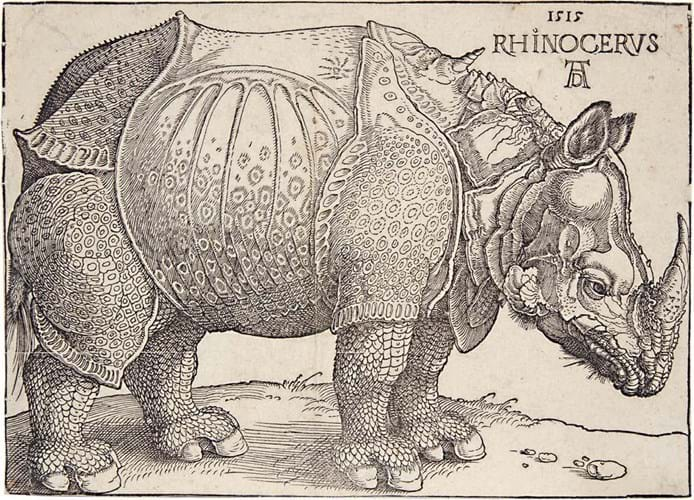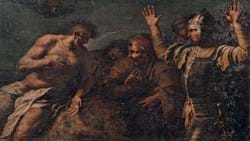
A Degas bronze and a Van Gogh drawing that achieved six-figure prices, a Durer print that outstripped its guide many times over and a Berthe Morisot oil secured by a major Paris Museum: the highlights of a select, 47-lot art sale held by Freeman’s (25/20/12% buyer’s premium) in Philadelphia on February 18.
The sale, the first to be held in the auction house’s new flagship city centre gallery, totalled $2.3m including premium with a 98% selling rate.
It spanned Old Masters through to 20th century works on paper and canvas, but it was big names from the Impressionist and Post-Impresssionist world that topped the bill.
Degas dancer
The highest price of the day was paid out for Edgar Degas’ bronze Grande Arabesque, Deuxième Temps, a posthumous, after 1948, lost-wax cast from the Hébrard foundry.
The 17in (43cm) high work is signed Degas, numbered 15 and stamped with a Cire/Perdue/A.A. Hébrard foundry mark on the top of the base. It was purchased from the Alex Maguy Galerie de l’Elysée in 1966 by the grandparents of the vendor.
The competition, which came via the room, the phones and the internet, took the bidding to $460,000 (£353,845), three times the estimate, with the hammer falling to a buyer who had seen the piece at Freeman’s pre-sale viewing in London.
Van Gogh goes hatless

The Van Gogh pencil and wash drawing of Adrianus Jacobus Zuyerland that realised $370,000 (£284,615) at Freeman’s.
The Van Gogh drawing followed this in price at $370,000 (£284,615), over double the estimate. This was a work from the artist’s Dutch period when he lived in The Hague. It depicted one of his most frequently used models, Adrianus Jacobus Zuyerland, a 72-year-old deaf pensioner whom he found at the Dutch Reformed almshouses in Geest.
The drawing, executed in January 1883 in pencil and black wash on paper on a sheet measuring just under 13 x 10¼in (32.5 x 26cm), is signed Vincent. It shows the sitter in profile bare headed without the distinctive cap in which he was sometimes portrayed.
Consigned from a New York collection, it has a provenance to a Dr HP Bremmer in The Hague, passing down by descent until it was acquired by E J van Wisselingh & Co in Amsterdam from whom it was acquired in 1968 and where it has remained in the same collection until consigned to Freeman’s.
Morisot sketch

Berthe Morisot’s oil on canvas after Boucher of Apollo revealing his divinity to the shepherdess Isse, that realised $170,000 (£130,770) at Freeman’s.
Following these items in price at a mid-estimate $170,000 (£130,770) was a late oil on canvas by the French Impressionist Berthe Morisot painted in 1892.
The 2ft 1in x 2ft 7in (64 x 79cm) work, a freely executed sketch of two nymphs in a form known as a pochade, is a copy of the lower section of an Old Master by François Boucher titled The god Apollo revealing his divinity to the shepherdess Isse.
It is one of two known works after this French rococo artist copied by Morisot, the other being a section of a painting of Venus asking Vulcan for armour for Aeneas.
The Freeman’s work featured in a memorial exhibition organised by fellow Impressionists Degas, Monet and Renoir and the poet Mallarmé in 1896, the year after Morisot’s death.
It had a provenance from the artist to her daughter Julie in whose family it descended until acquired for a New York private collection in the 1970s.
This oil was purchased at the auction by the Musée Marmottan- Monet in Paris and will feature in a 2021 exhibition dedicated to the influence of 18th century art on Morisot’s work.
One of the earliest works in the auction was an early 16th century woodcut by Albrecht Dürer (1471-1528) of a rhinocerous, a highly stylised rendition of the animal in which the heavy folds of skin appear like armour. Dürer had never seen this animal but based his print on a sketch by the painter Valentin Ferdinand of a rhino given to the Portuguese King Emanuel I by Pope Leo X.
The Freeman’s print, which measures 8½ x 12in (21.5 x 30cm) is a good impression of the sixth state (of a total of eight) printed by Hendrik Hondius, The Hague, c.1620, provenanced to a New Jersey private collection and easily outpaced a $12,000-18,000 guide to sell for $65,000 (£50,000).
This was one of two prints by the artist in the sale. The other, a 5 x 3½in (13 x 9cm) drypoint on laid paper of The Man of Sorrows with Hands Bound, monogrammed and dated 1512, sold in line with its $6000- 12,000 guide at $7000 (£5385).
The Eugène Boudin painting of a farmyard scene which was previewed in ATG No 2429 sold below estimate at $21,000 (££16,155).
£1 = $1.30















